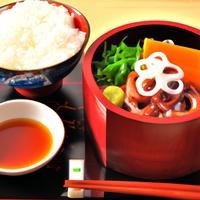
1 serving (100 grams) contains 80 calories, 15.0 grams of protein, 1.0 grams of fat, and 2.0 grams of carbohydrates.

Log this food in SnapCalorie

Nutrition Information
Calories |
190.5 | ||
|---|---|---|---|
% Daily Value* |
|||
| Total Fat | 2.4 g | 3% | |
| Saturated Fat | 0.5 g | 2% | |
| Polyunsaturated Fat | 0 g | ||
| Cholesterol | 119.0 mg | 39% | |
| Sodium | 1190.5 mg | 51% | |
| Total Carbohydrates | 4.8 g | 1% | |
| Dietary Fiber | 0 g | 0% | |
| Sugars | 2.4 g | ||
| protein | 35.7 g | 71% | |
| Vitamin D | 0 mcg | 0% | |
| Calcium | 47.6 mg | 3% | |
| Iron | 2.4 mg | 13% | |
| Potassium | 357.1 mg | 7% | |
* Percent Daily Values are based on a 2,000 calorie diet. Your daily values may be higher or lower depending on your calorie needs.
Food Attributes
Source of Calories
About Takowasa
Takowasa is a Japanese dish made from raw octopus (tako) mixed with wasabi, creating a tangy and spicy flavor combination. The octopus is usually chopped into small pieces and marinated with soy sauce, sake, or mirin to enhance its umami profile. It is often served as a cold appetizer, popular in izakaya-style dining. Nutritionally, octopus is high in protein, low in fat, and provides essential nutrients such as iron, selenium, and vitamin B12. It is also a good source of omega-3 fatty acids, which support heart health. However, wasabi can be harsh for sensitive stomachs, and the sodium content from soy sauce may be a concern for those monitoring their salt intake. Takowasa is best enjoyed as part of a balanced diet and pairs well with light dishes to offset its intensity.



